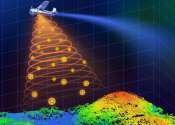Detecting intelligent life that's light years away: Greenhouse gases could signal alien activity
If aliens modified a planet in their solar system to make it warmer, we'd be able to tell. A new UC Riverside study identifies the artificial greenhouse gases that would be giveaways of a terraformed planet.









